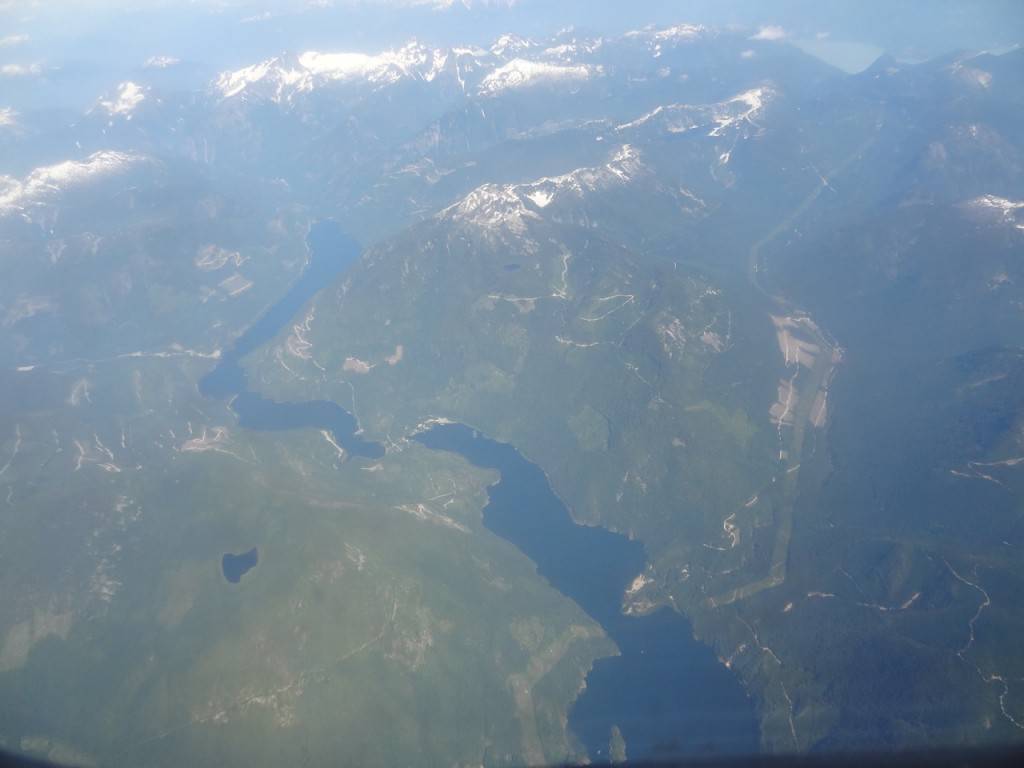
After 10 days in the wilderness on Porcher Island and half a day "cleaning" in a hotel in Prince Rupert, I'm now on a plane to Vancouver. I have tied the Japanese glass buoy in a fishing net I found and carry it around with me. It's generally admired (by people who know what I'm carrying) and probably ridiculed by everyone else.
Prince Rupert is the northernmost town on Canada's west coast, just a few kilometers from the Alaskan border. Its tiny airport gives you an idea that you are far away from the crowds on the edge of the wilderness. We had loaded our luggage into the truck at the Highland Inn, along with that of the other passengers, and had taken the bus to the small ferry that brought us to the airport, which is located on Digsby Island. There we had to remove our luggage from the luggage ramp, which was just five meters long, and check it in properly ten meters further on. Finally, we walked across the small tarmac to the small plane.
So here I am, seat no. 1A, sitting by the window - and enjoying the view. The pilot has just told us that the flight to Vancouver will take a good hour.
I look back at the untouched forests and moors of the rugged coastline with its many small islands, which was my home for a while. It feels very familiar and disappears far too quickly under a thick blanket of cloud.
Now the clouds break again, revealing a view of snow-covered mountain peaks that glide endlessly below me. I notice a few circular volcanic craters and follow the rivers as they make their way down the valleys. Then huge glaciers emerge below me, striped greenish-white in long tongues covering the valleys.
Bays jutting far into the land criss-cross the landscape below me. The rivers flow into them, some of them in extensive deltas, and they color the greenish water. Other bodies of water glisten dark blue, especially the lakes, which seem to sleep in the valleys further up.
Finally, the roads become more frequent. They stand out because they zigzag up the slopes and always start at the sea - and the light brown patches around them are clearly visible: clear-cuts that expand and become more numerous the further south we go. Now the settlements also catch my eye. Small ships paint white lines in the water, which is sometimes turquoise, sometimes greenish and then shimmers darkly beneath us. And on top of them, brown, striped "islands": large areas of tree trunks chained together.
From a bird's eye view, it becomes clear that the forest here has a completely different structure: even from up here, you can see that large monocultures and homogeneous forest areas spread out below us, interspersed with light brown, fresh clear-cuts.
Now the settlements and harbors become more frequent and finally merge into a large city - Vancouver.
From above, I can clearly make out Stanley Park, then downtown with its incomparable skyscrapers, next to two large cruise ships, marinas, Gastown. And then the suburbs, where the small houses are neatly arranged in a regular network of streets, some with bright blue pools, bridges, railroad tracks and geometrically patterned fields.
At the airport at the latest, it becomes clear: we have left seclusion far behind us! This is a big city - and one with a really beautiful airport (the most beautiful I know).
But I already miss the peace and seclusion in the hustle and bustle of everyday life. And I know one thing for sure: I will be back, back to the indescribably peaceful and tranquil wilderness of the Canadian west coast with its last untouched forests, fascinating moorlands and soothing solitude.
Thank you!







